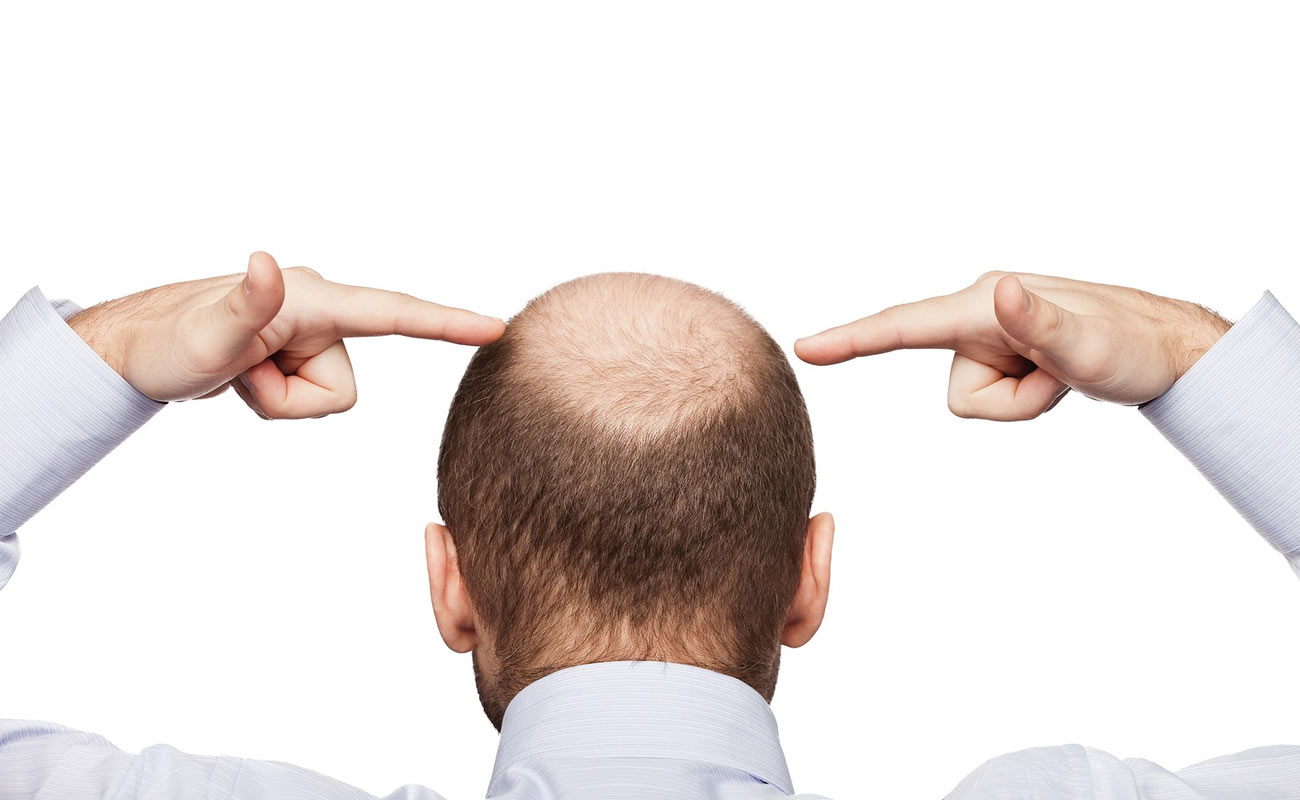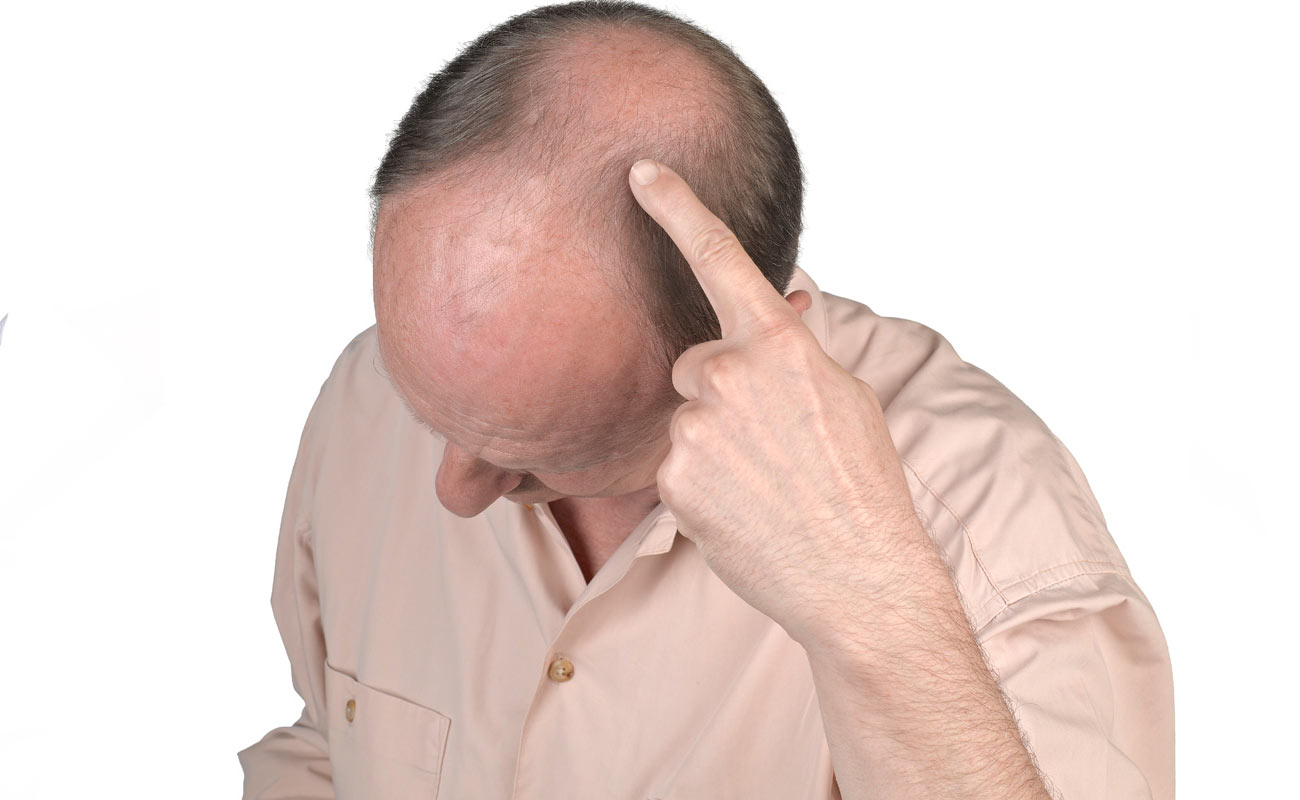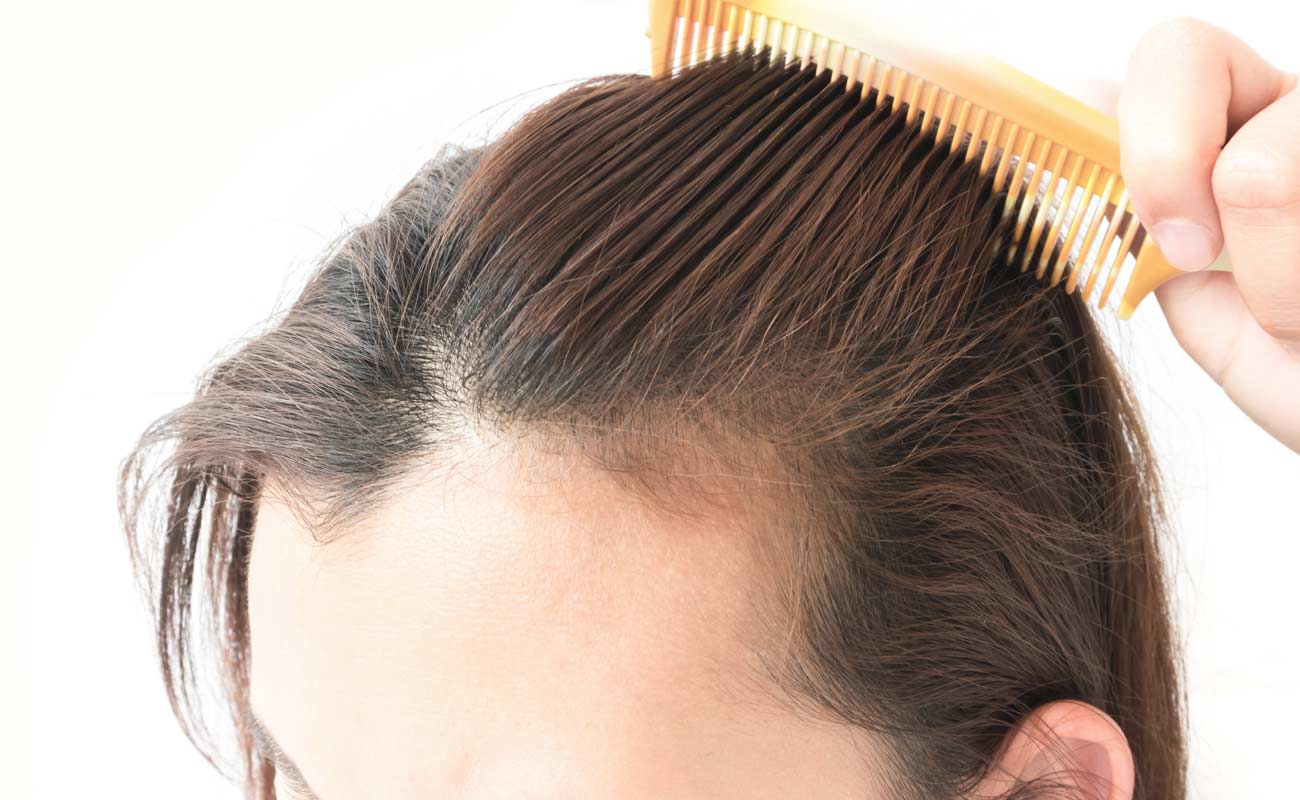What is Andogenetic Alopecia?

The majority of women with androgenic alopecia have diffuse thinning on all areas of the scalp. Men on the other hand, rarely have diffuse thinning but instead have more distinct patterns of baldness. Some women may have a combination of two pattern types. Androgenic alopecia in women is due to the action of androgens, male hormones that are typically present in only small amounts. Androgenic alopecia can be caused by a variety of factors tied to the actions of hormones, including, ovarian cysts, the taking of high androgen index birth control pills, pregnancy, and menopause. Just like in men the hormone DHT appears to be at least partially to blame for the miniaturization of hair follicles in women suffering with female pattern baldness. Heredity plays a major factor in the disease.
Symptoms

Androgenetic alopecia affects men earlier, and more commonly, than women. Males typically become aware of scalp hair loss or a receding hairline, beginning at any time after puberty. In women, the age of onset is later compared to men, usually occurring in the 50s or 60s. Occasionally, androgenetic alopecia in women may start earlier than this, in the 30s or 40s. In some women, this condition can be associated with an excess of male hormones such as in polycystic ovary syndrome (PCOS).
Acne, increased facial hair, irregular periods and infertility are all signs of PCOS.
Diffuse alopecia areata may mimic the androgenetic form. The presence of exclamation point hairs, pitted nails, or a history of periodic regrowth or tapered fractures noted on hair counts suggests the diagnosis of diffuse alopecia areata.
Males
Females
Androgenetic alopecia can usually be diagnosed by examining the scalp. In some cases, you will need blood tests to look for other causes of hair loss, like changes in hormone levels, low iron levels (anemia), or thyroid problems.

he American Academy of Dermatology developed a guideline for the care of androgenetic alopecia in 1996.1 The goals for the treatment of androgenetic alopecia involve increasing hair growth and stopping the progression of hair thinning. Before recommending treatment, patients should be thoroughly examined by a dermatologist to assess causes of hair loss and to have laboratory tests performed if needed.
There are 2 products that are indicated for androgenetic alopecia: finasteride (Propecia) and minoxidil (Rogaine). Although both may show positive results, they may not be effective for everyone.
Finasteride
In late 1997, the FDA approved oral finasteride for the treatment of androgenetic alopecia in men. Finasteride works by competitively inhibiting type II 5-αreductase, an enzyme responsible for converting the androgen testosterone into DHT.6 Finasteride is indicated for the treatment of androgenetic alopecia in men with mild-to-moderate hair loss from the vertex and anterior mid-scalp area (middle front of the head).7 Efficacy and safety have been studied in men between 18 and 41 years of age.
The dose of finasteride is 1 mg by mouth daily. Effects of finasteride can be seen within 3 months with a reduction of hair loss, and at 6 months new hair growth may be seen.7 If finasteride has been effective after 12 months of use, patients should be maintaining the hair they already have and may be regrowing hair that had been lost. Not everybody will respond to treatment; patients should discontinue use if finasteride has not worked within 12 months.7 Long-term treatment is necessary in order to maintain and improve hair growth. Benefits from finasteride will disappear after 12 months of discontinuation.
Possible adverse reactions from finasteride are breast tenderness and enlargement, as well as testicular pain. A small number of men have experienced sexual side effects, such as decreased desire for sex, difficulty in achieving an erection, and a decreased amount of semen.6 Currently, finasteride is limited to use by men only because of the potentially teratogenic effects.4 Exposure of finasteride to a pregnant female may cause abnormalities of the external genitalia of a male fetus. The drug is therefore categorized as a Pregnancy Risk Factor X drug.6 It is safe for a man to take finasteride, however, if he and his significant other are trying to conceive.7
Minoxidil
Minoxidil is a topical product also used for hair growth. It works by increasing the cutaneous blood flow to resting hair follicles.6 Topical use is for general thinning of the vertex, and this agent is not intended for frontal baldness or receding hairlines.8 Minoxidil is available in 2 strengths, 2% and 5%. The 2% minoxidil is indicated for women, whereas both strengths are indicated for men. Hair growth may be seen after 4 months of use, and faster and improved results may be seen with the 5% minoxidil.8 Any regrowth of hair will be lost after 4 months if therapy is discontinued.
In using minoxidil, 1 mL is applied directly to the dry scalp once in the morning and once within 2 to 4 hours before bedtime. The solution must be rubbed in once applied to the scalp; the medication will not work if it is merely applied to the hair. Hair products such as sprays, mousses, conditioners, and gels can be used if minoxidil is applied and rubbed in first and has fully dried.8
Adverse reactions that can be expected are itching and dryness of the scalp. Minoxidil should be discontinued if a patient reports any signs or symptoms of chest pain, rapid heartbeat, faintness, lightheadedness, or unexplained weight gain.8
Recent Studies

Iorizzo et al9 recently conducted a nonrandomized, unblinded, non-placebo-controlled study to evaluate the efficacy of oral finasteride in combination with an oral contraceptive in premenopausal women with female pattern hair loss. Thirty-seven women were administered 2.5 mg of finasteride daily, together with an oral contraceptive containing 3 mg drospirenone and 30 mcg ethinyl estradiol over 1 year.
Using global photography and the hair density score from videodermoscopy, together with a self-administered questionnaire, the results indicated a statistically significant increase in hair density score in 12 patients (P = .002).Twenty-three of the 37 patients had improved hair growth, as evidenced by global photography. No improvement was reported in 13 patients; 1 patient experienced worsening of the condition. No adverse reactions were discovered. Regardless, it is unclear whether the effects of increased hair density were a result of the finasteride or the drospirenone, which has been shown to elicit an antiandrogenic effect. Future studies are required before finasteride may be recommended for women with androgenetic alopecia.
americanhairloss.org, pharmacytimes.com, emedicine.medscape.com, uptodate.com, ghr.nlm.nih.gov
Submit Comment